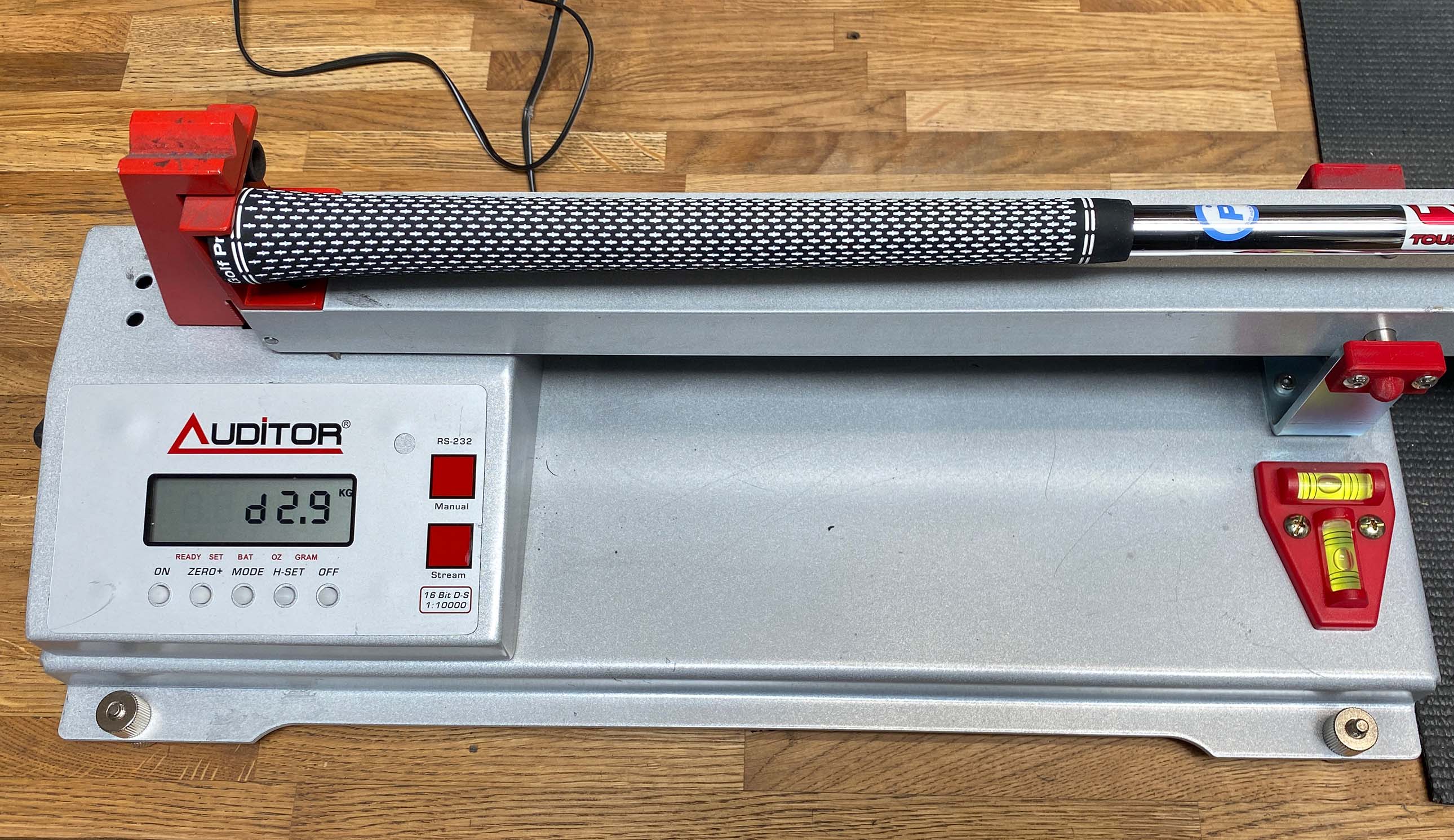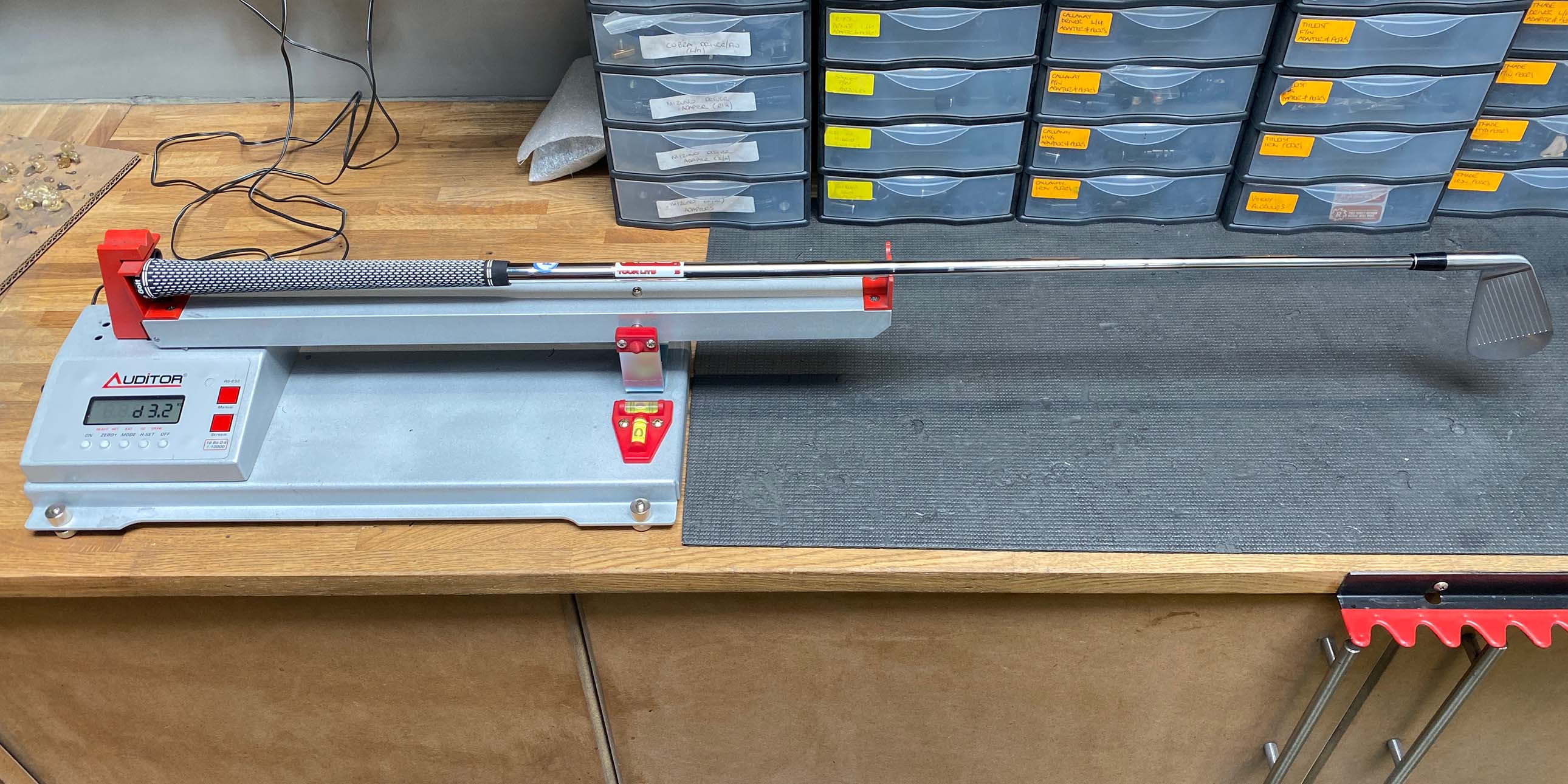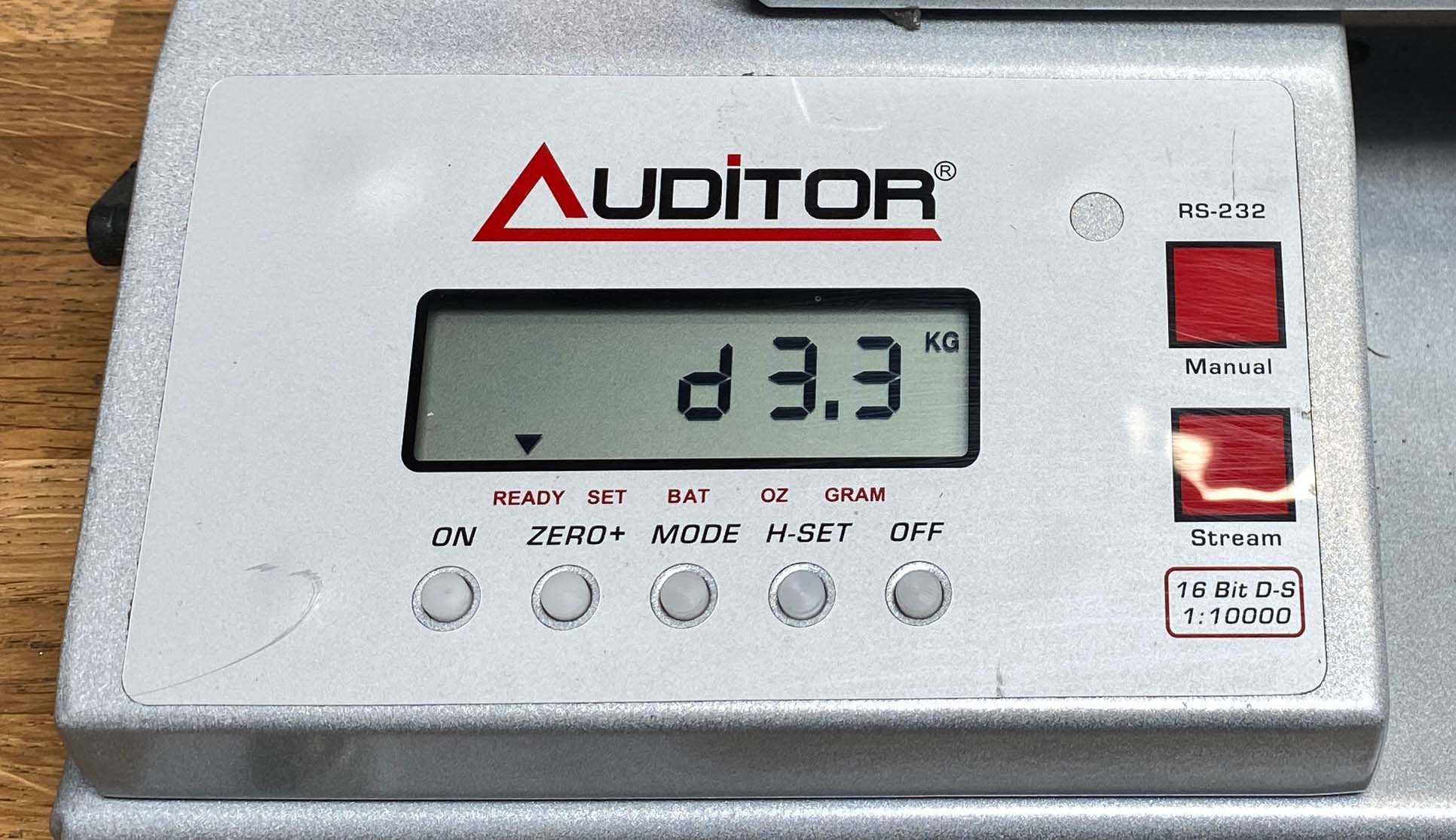
What Is Swing Weight In Golf?
Swing weight in golf is how club makers measure the relative weight of each club in the set so that it feels consistent from one club to the next. Swing weight is not a measurement of the actual weight of a club, but a measurement of the relative weight of the top third of the golf club to the bottom two thirds.
Invented in the 1920s, swing weight is measured on a scale of A to F bands, with each band graded 0-9. The lightest weight is A0 and the heaviest is F9, but you will find most sets of irons for men will be around D0 and for ladies around C6.
Swing weight is measured using a swing weight machine, which looks like a set of scales. The club is placed on the machine and either a sliding weight is used to balance the club horizontally, or if it is a modern digital machine like below the digital screen gives a reading.

Why Is Swing Weight Important?
Swing weight is important because it is effectively a measurement of feel and matching the swing weight across different lengths of clubs should create a more consistent set. Swing weight is affected by fairly minor changes such as using a different type of grip or changing the weight or length of the type of shaft you are using. Club makers also use lead tape on the back of irons and wedges to add weight to clubs to vary the swing weight.
The difference in one swing weight from D0 to D1 is going to be hard for most golfers to notice. Lengthening a shaft by half an inch is going to change the swing weight by three points and that will feel more noticeable. Depending on where you change the weight will affect the swing weight in different ways. Adding five grams to the weight of the grip will increase the swing weight by one point, as will adding nine grams to the shaft weight or two grams to the head weight.

The benefits of changing swing weight are to create more consistent strike between clubs that will maximise distance and accuracy through having more centred strikes on the club face. The swing weight should balance a club that is light enough to generate the most club head speed, but heavy enough to generate enough energy into the ball at impact.
Most manufacturers and club fitters will try and keep swing weights consistent in a set of clubs, but there are schools of thought that it should increase from being slightly lighter in the driver to being heavier in the short irons.
As with most things to do with golf clubs, it is therefore important to get custom fitted to find the right set up for your game and then leave it well alone, as adjusting the length or other features of your club could also change the swing weight.







